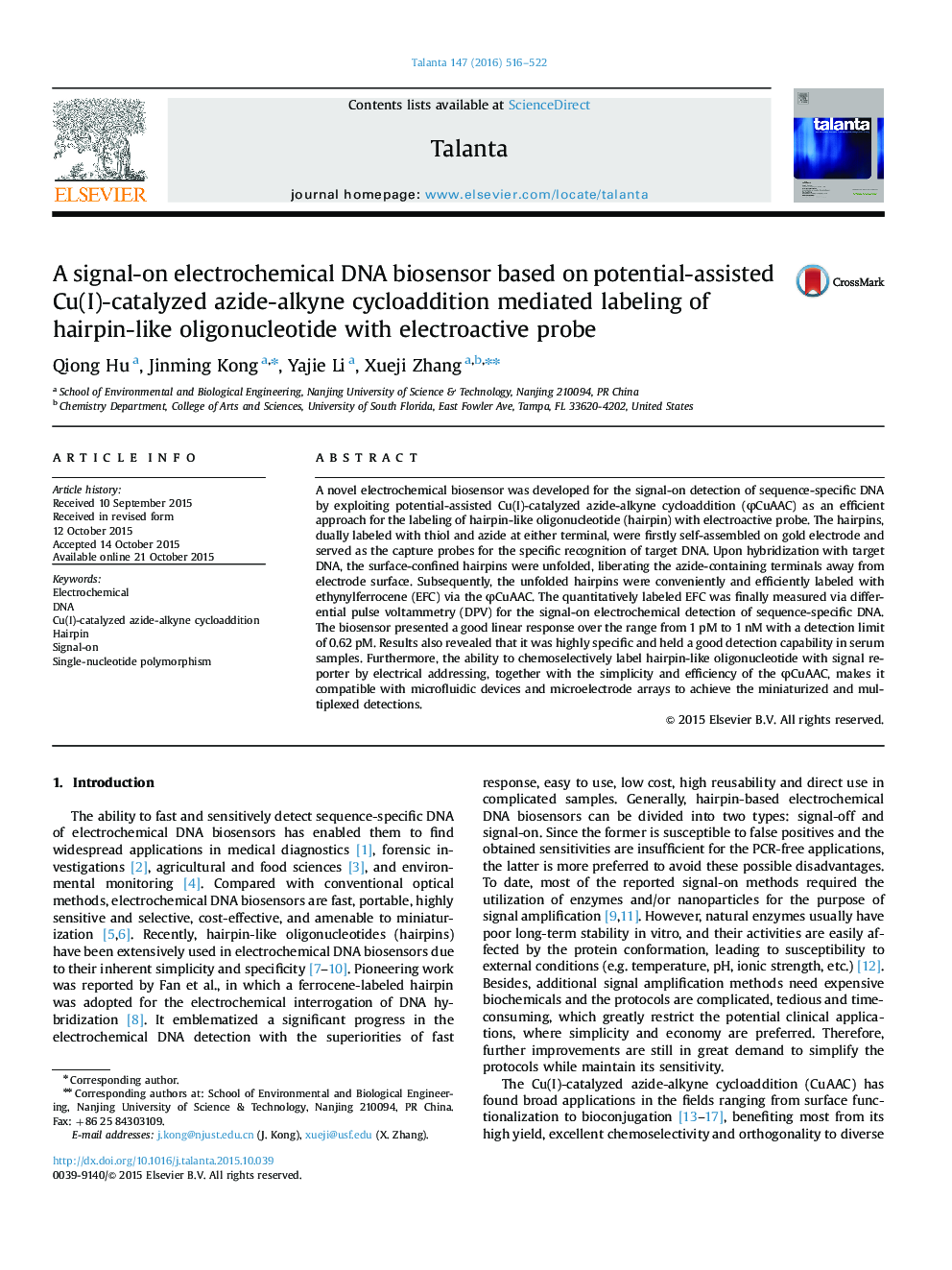| Article ID | Journal | Published Year | Pages | File Type |
|---|---|---|---|---|
| 1242789 | Talanta | 2016 | 7 Pages |
•This is a signal-on biosensor and it is highly compatible with multiplexed detections.•The φCuAAC is exploited to label hairpins with EFC under mild conditions.•The labeling is rapid, selective and can be realized conveniently and efficiently.•It is highly specific and holds good detection capability in complicated serum sample.•The sensitivity and stability are satisfactory with the protocol has been simplified.
A novel electrochemical biosensor was developed for the signal-on detection of sequence-specific DNA by exploiting potential-assisted Cu(I)-catalyzed azide-alkyne cycloaddition (φCuAAC) as an efficient approach for the labeling of hairpin-like oligonucleotide (hairpin) with electroactive probe. The hairpins, dually labeled with thiol and azide at either terminal, were firstly self-assembled on gold electrode and served as the capture probes for the specific recognition of target DNA. Upon hybridization with target DNA, the surface-confined hairpins were unfolded, liberating the azide-containing terminals away from electrode surface. Subsequently, the unfolded hairpins were conveniently and efficiently labeled with ethynylferrocene (EFC) via the φCuAAC. The quantitatively labeled EFC was finally measured via differential pulse voltammetry (DPV) for the signal-on electrochemical detection of sequence-specific DNA. The biosensor presented a good linear response over the range from 1 pM to 1 nM with a detection limit of 0.62 pM. Results also revealed that it was highly specific and held a good detection capability in serum samples. Furthermore, the ability to chemoselectively label hairpin-like oligonucleotide with signal reporter by electrical addressing, together with the simplicity and efficiency of the φCuAAC, makes it compatible with microfluidic devices and microelectrode arrays to achieve the miniaturized and multiplexed detections.
Graphical abstractFigure optionsDownload full-size imageDownload as PowerPoint slide
